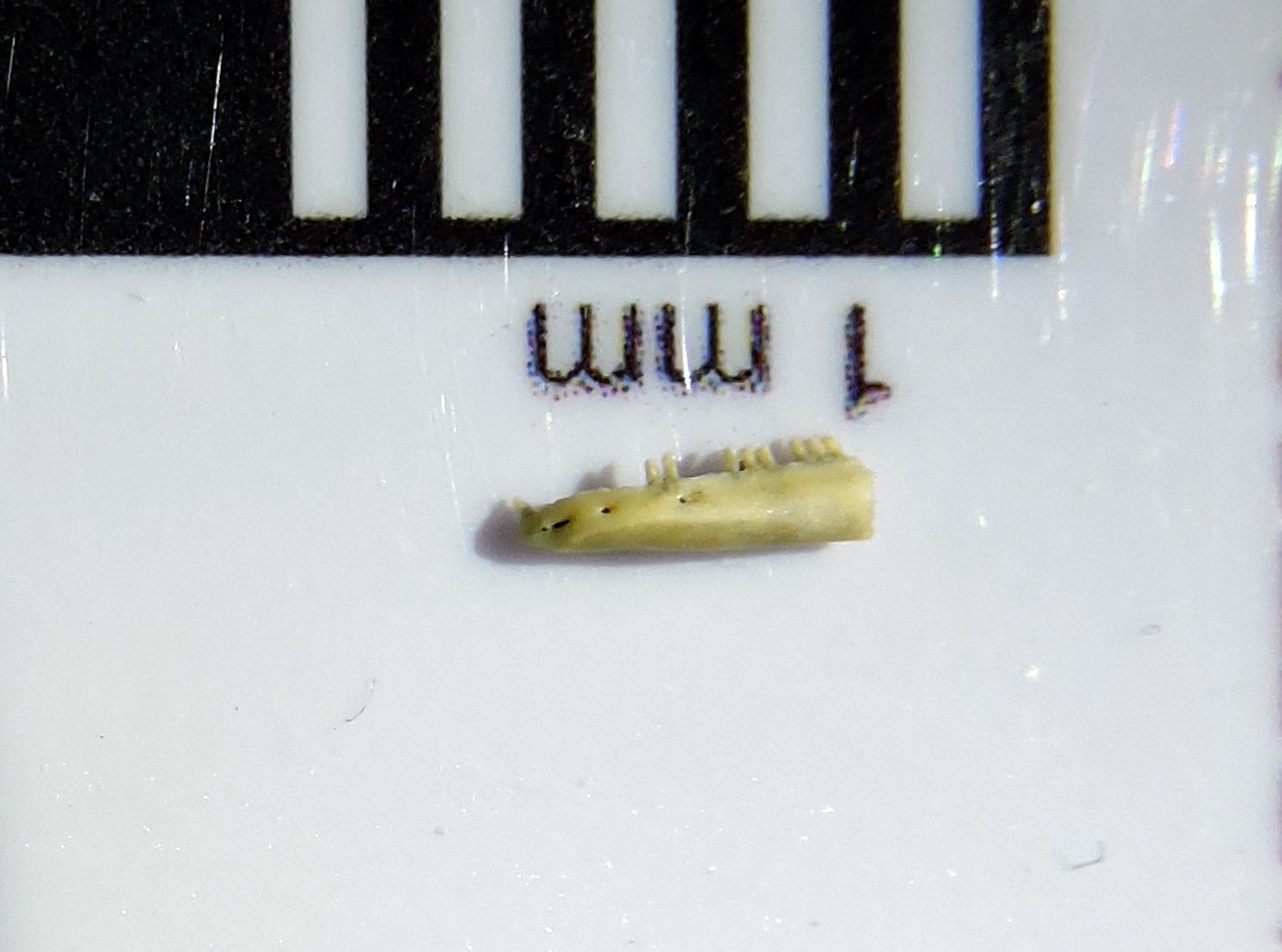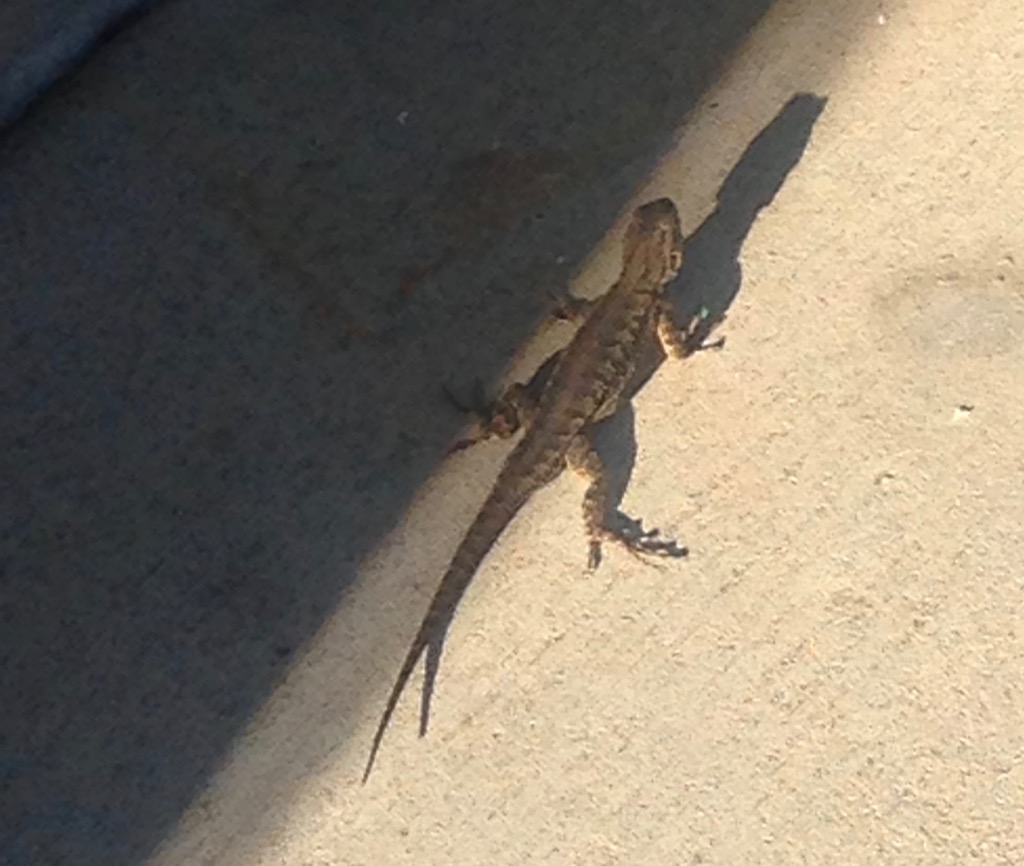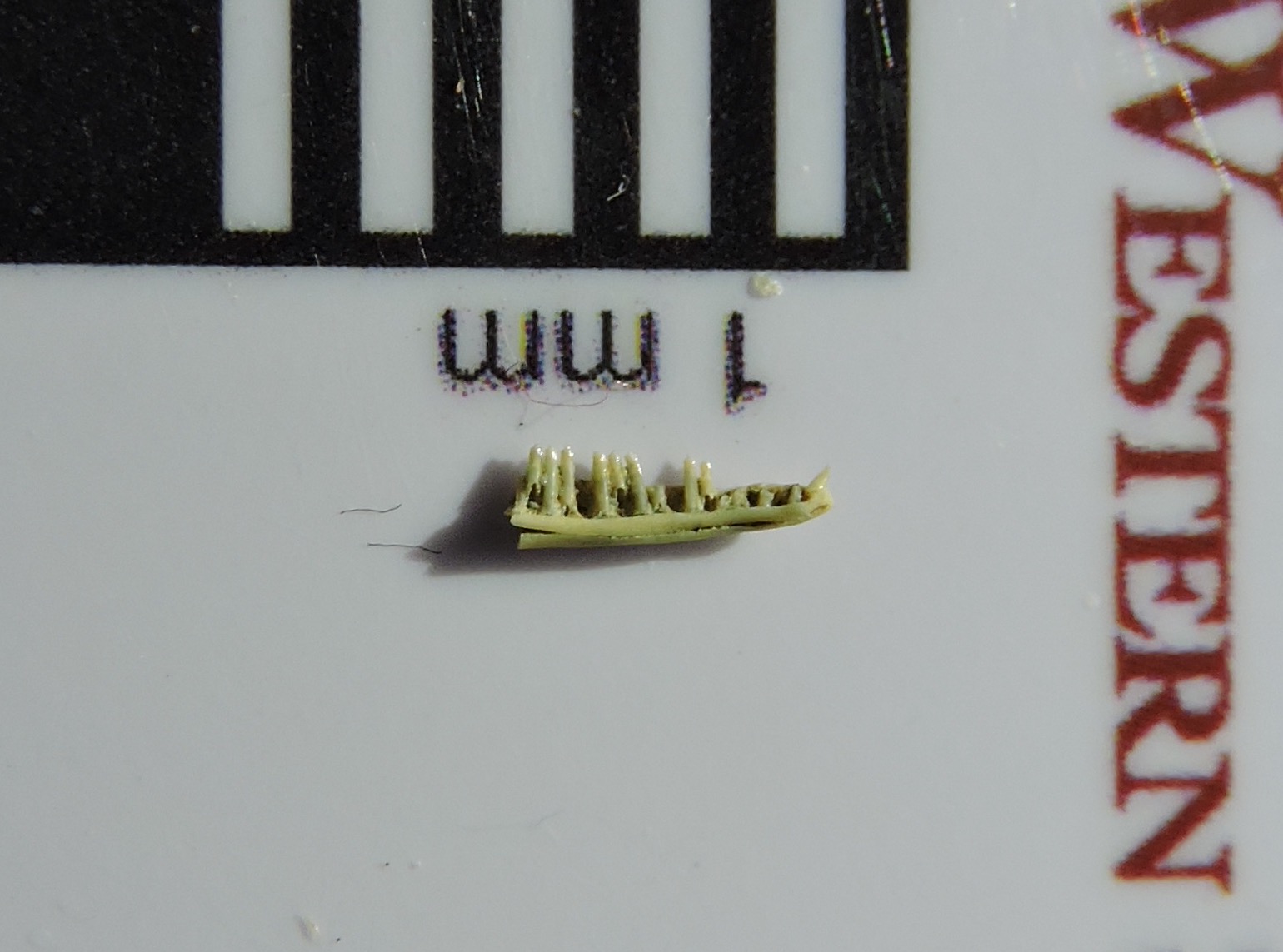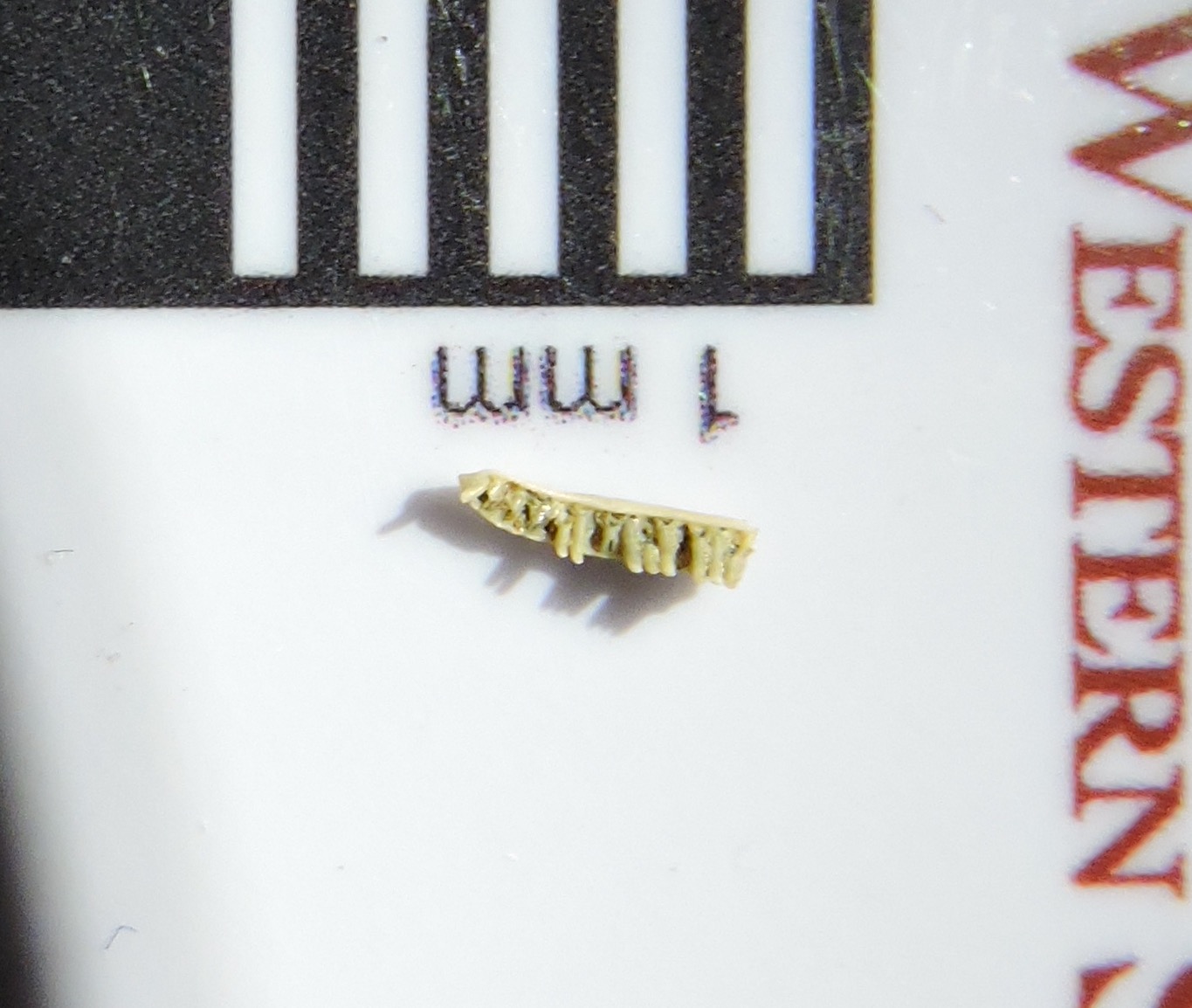 Lizards are a common site today across southern California, and that was true in the Pleistocene as well. Large numbers of lizard bones were recovered from Diamond Valley Lake sediments, including the one shown here.This is a partial left lower jaw from a lizard of the genus Sceloporus, most likely a western fence lizard (Sceloporus occidentals). These small lizards live all over California today, and are often sunning in my driveway when I get home from work:
Lizards are a common site today across southern California, and that was true in the Pleistocene as well. Large numbers of lizard bones were recovered from Diamond Valley Lake sediments, including the one shown here.This is a partial left lower jaw from a lizard of the genus Sceloporus, most likely a western fence lizard (Sceloporus occidentals). These small lizards live all over California today, and are often sunning in my driveway when I get home from work: As I mentioned in an earlier post, mammals have lower jaws that consist of a single bone, the dentary, on each side. In other vertebrates the dentary is one of several bones that make up the lower jaw. This particular specimen includes the anterior part of the left dentary, while the back part of the dentary and the other lower jaw bones are all missing. The view at the top is a lateral (side) view, with anterior to the left. Below is a medial view, anterior to the right:
As I mentioned in an earlier post, mammals have lower jaws that consist of a single bone, the dentary, on each side. In other vertebrates the dentary is one of several bones that make up the lower jaw. This particular specimen includes the anterior part of the left dentary, while the back part of the dentary and the other lower jaw bones are all missing. The view at the top is a lateral (side) view, with anterior to the left. Below is a medial view, anterior to the right: In this view we can more clearly see there are nine complete teeth preserved, and the bases of at least five others.Here's a dorsal or occlusal view, anterior to the left:
In this view we can more clearly see there are nine complete teeth preserved, and the bases of at least five others.Here's a dorsal or occlusal view, anterior to the left: Fence lizards are widespread today and live in a variety of environments, so the presence of fence lizards doesn't really give us any information about the paleoenvironmental conditions at Diamond Valley Lake during the Pleistocene. But if you traveled back to the Pleistocene and could pull your eyes away from the mammoths, mastodons, and other megafauna long enough to look at the small animals among the shrubs and rocks, what you would see would look a lot like modern-day California.
Fence lizards are widespread today and live in a variety of environments, so the presence of fence lizards doesn't really give us any information about the paleoenvironmental conditions at Diamond Valley Lake during the Pleistocene. But if you traveled back to the Pleistocene and could pull your eyes away from the mammoths, mastodons, and other megafauna long enough to look at the small animals among the shrubs and rocks, what you would see would look a lot like modern-day California.
